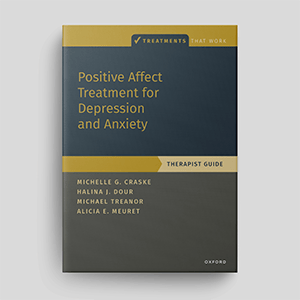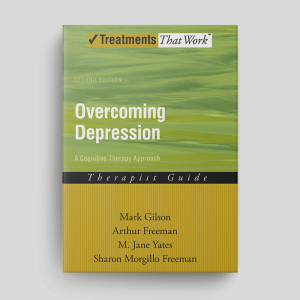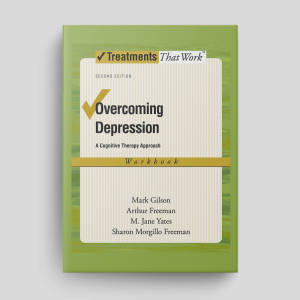Positive Affect Treatment For Depression And Anxiety: Workbook
Positive affect treatment (PAT) is an evidence-based treatment for depression and anxiety. This workbook is designed to help clients understand, manage, and overcome symptoms of anxiety and low mood. A therapist guide is downloadable separately.
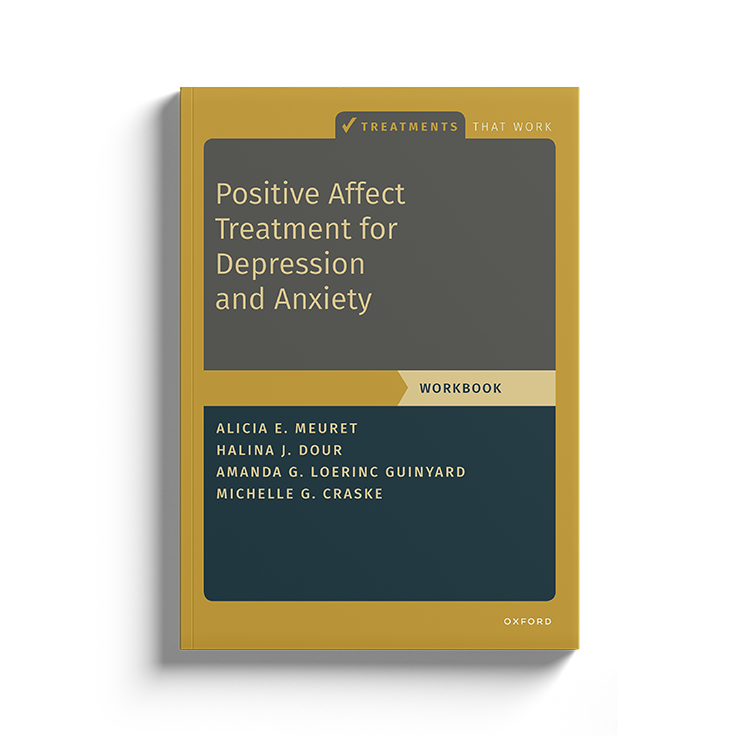
Download or send
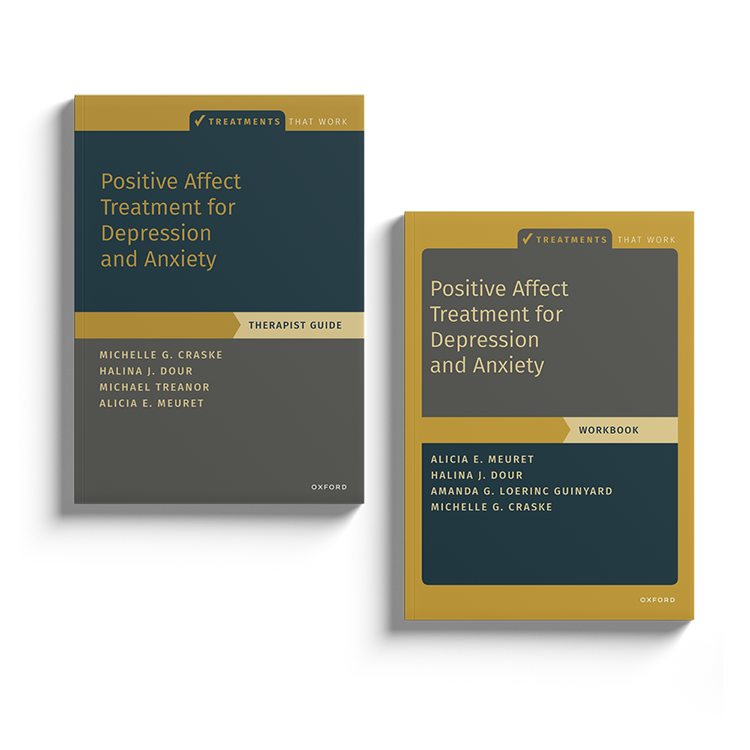
Overview
Positive affect treatment (PAT) is an innovative, evidence-based intervention designed to address anhedonia, a diminished ability to experience pleasure that is prevalent across many mental health conditions, including depression and anxiety. Grounded in behavioral science and affective neuroscience, PAT integrates behavioral activation (BA), cognitive techniques, and experiential practices to enhance reward responsiveness. BA encourages clients to engage in enjoyable and meaningful activities, using memory specificity training to savor and deepen positive experiences. Cognitive strategies help focus attention on and appreciate rewarding experiences. Experiential practices further cultivate positive emotions and strengthen interpersonal connections. Clinical trials have demonstrated PAT’s efficacy, with participants showing significant improvements in positive affect, depression, anxiety, and overall well-being. By systematically building the capacities to anticipate, enjoy, and learn from rewards, PAT offers a comprehensive approach to treating anhedonia and restoring emotional balance, making it a valuable tool for mental health professionals.
Why use this resource?
This workbook provides a structured, accessible program for clients struggling with anxiety and depression, written by experts.
- Explains what maintains anxiety and depression.
- Describes effective interventions for improving mood.
- Broken into a series of accessible chapters for clients.
- Authored by world-leading experts in the field.
- Accompanied by a dedicated therapist guide.
Key benefits
Structured
Educational
Evidence-Based
Flexible
Trusted
What difficulties is this for?
Depression
Characterized by persistent low mood and loss of interest.
Generalized Anxiety Disorder
Chronic worry or excessive nervousness.
Integrating it into your practice
Assessment
Explore how clients experience depression or anxiety.
Psychoeducation
Teach clients about depression and anxiety and what maintains them.
Skills
Encourage clients to read the workbook and implement the strategies it describes.
Monitoring
Use structured worksheets and feedback to track progress and refine interventions.
Relapse Prevention
Equip clients with long-term strategies for maintaining their progress.
Theoretical background and therapist guidance
Anhedonia, a core feature of many mental health conditions, involves a diminished ability to experience pleasure or interest in life’s usual activities. It is prevalent across various disorders, including depression, anxiety, psychosis, and substance use, serving as a significant predictor of poor psychosocial functioning, treatment resistance, and suicidality (Ducasse et al., 2018; Winer et al., 2014). Despite its profound impact, traditional psychological and pharmacological treatments have largely emphasized reducing negative affect, often neglecting the deficits in the reward system that underlie anhedonia (Craske et al., 2016).
To address these limitations, positive affect treatment (PAT) was developed as an evidence-based intervention specifically targeting the reward system disruptions that characterize anhedonia. PAT’s theoretical framework is rooted in the dual-systems model of emotion regulation, which emphasizes the interplay between the approach system (linked to positive affect) and the avoidance system (linked to negative affect) in shaping behavior and emotional responses (Lang & Bradley, 2013). By enhancing the reward system’s functionality, PAT aims to restore balance and improve overall emotional well-being.
PAT employs a multi-faceted approach to systematically build “wanting,” “liking,” and “learning” capacities related to reward responsiveness. The treatment integrates strategies across three domains:
- Action towards feeling better: This foundational intervention encourages clients to plan and engage in positive activities that provide pleasure, accomplishment, or align with personal values. Activities are designed to enhance the anticipation (“wanting”) and enjoyment (“liking”) of rewards. Memory specificity training, or “Savoring the Moment,” deepens the hedonic impact of these experiences by guiding clients to visualize and recount positive events vividly, focusing on sensations, thoughts, and emotions (Barry et al., 2019; Yang et al., 2018).
- Attending to the positive: PAT introduces a distinct cognitive approach aimed at redirecting attention to positive experiences, fostering appreciation for past achievements, and imagining future rewards. Techniques such as “Finding the Silver Linings” help clients identify positive elements in everyday situations, while “Taking Ownership” and “Imagining the Positive” strengthen self-efficacy and anticipation of joy (Holmes et al., 2006; Pictet et al., 2011). These strategies enhance both “liking” and “learning” by reinforcing positive emotional associations.
- Building positivity: PAT includes experiential exercises such as loving-kindness meditation, gratitude practices, and acts of generosity to cultivate and sustain positive emotions (Fredrickson et al., 2008). These activities are designed to improve interpersonal connections, self-compassion, and mood while reinforcing the brain’s reward pathways (Hofmann et al., 2015; Snippe et al., 2018).
A randomized controlled trial comparing PAT with negative affect treatment (NAT), a cognitive-behavioral therapy intervention, demonstrated PAT’s superior efficacy in fostering positive affect and reducing symptoms of anxiety, depression, stress, and suicidality. Participants in the PAT group showed significant improvements in positive affect, with scores on the Positive and Negative Affect Schedule (PANAS) reaching population norms by the end of treatment and maintained at a six-month follow-up. Notably, PAT also significantly reduced negative affect compared to NAT, highlighting its dual effectiveness in addressing emotional dysregulation.
The program includes two books:
- Positive Affect Treatment For Depression And Anxiety: Therapist Guide
- Positive Affect Treatment For Depression And Anxiety: Workbook
Authored by leading psychologists including David Barlow, Michelle Craske and Edna Foa, Treatments That Work™ is a series of manuals and workbooks based on the principles of cognitive behavioral therapy (CBT). Each pair of books (Therapist/Clinician Guide and Workbook) – contains step-by-step procedures for delivering evidence-based psychological interventions and will help you to provide the best possible care for your clients.
At Psychology Tools, we are proud to make many of the Treatments That Work™ titles available to our members. Each book is available to download chapter-by-chapter, and Psychology Tools members with a currently active subscription to our ‘Complete’ plan are licensed to share copies with their clients.
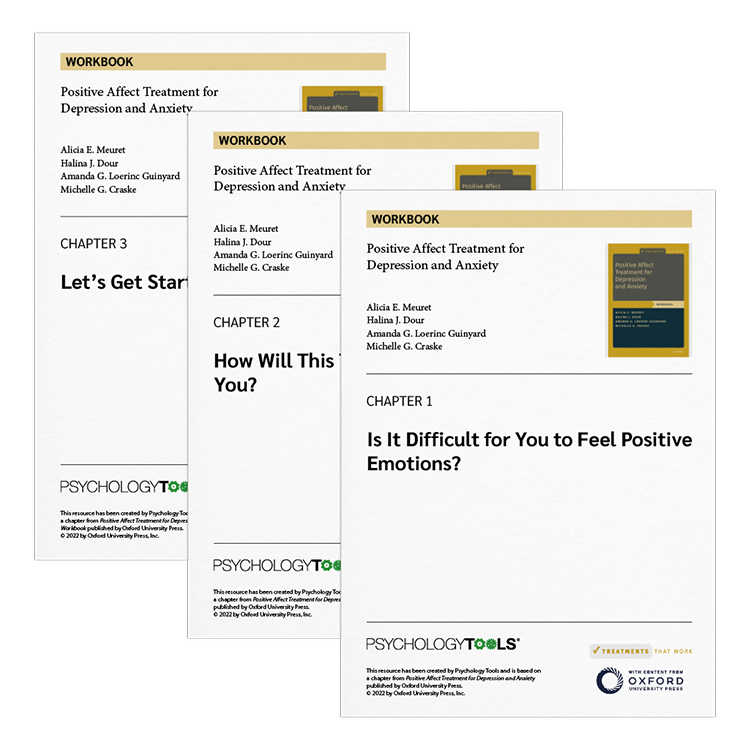
What's inside
- Comprehensive psychoeducation about depression and anxiety.
- Effective interventions for achieving long-term improvement.
- Strategies for reducing the risk of relapse.
- Engaging and accessible content written specifically for clients.
FAQs
How this resource helps improve clinical outcomes
By using this workbook, clients benefit from:
- A structured and accessible approach that targets their difficulties.
- Trustworthy guidance and information.
- Effective techniques that enhance progress.
- Tools that support both in-session work and out-of-session practice.
- Lasting improvements and reduced risk of relapse.
Clinicians who use this resource also use
References and further reading
- Craske, M. G., Meuret, A. E., Ritz, T., Rosenfield, D., Treanor, M., & Dour, H. (2019). Positive Affect Treatment for Depression and Anxiety: A randomized clinical trial for a core feature of anhedonia. Journal of Consulting and Clinical Psychology, 87, 457-471.
- Beck, A. T., Rush, A. J., Shaw, B. F., & Emery, G. (1979). Cognitive Therapy of Depression. Guilford Press.
- Fredrickson, B. L. (2001). The role of positive emotions in positive psychology: The broaden-and-build theory of positive emotions. American Psychologist, 56, 218-226.
- Lyubomirsky, S., Sheldon, K. M., & Schkade, D. (2005). Pursuing happiness: The architecture of sustainable change. Review of General Psychology, 9, 111-131.
Just enter your name and email address, and we'll send you Positive Affect Treatment For Depression And Anxiety: Workbook (English US) straight to your inbox. You'll also receive occasional product update emails wth evidence-based tools, clinical resources, and the latest psychological research.
Product
Company
Support
- © 2026 Psychology Tools. All rights reserved
- Terms & Conditions
- Privacy Policy
- Cookies Policy
- Disclaimer
Working...
We value your privacy
This site uses strictly necessary cookies to function. We do not use cookies for analytics, marketing, or tracking purposes. By clicking “OK”, you agree to the use of these essential cookies. Read our Cookie Policy
